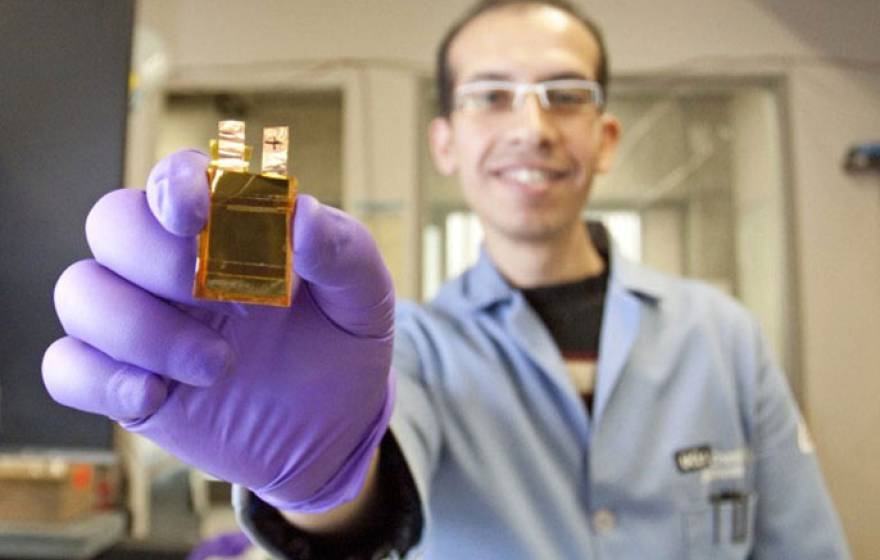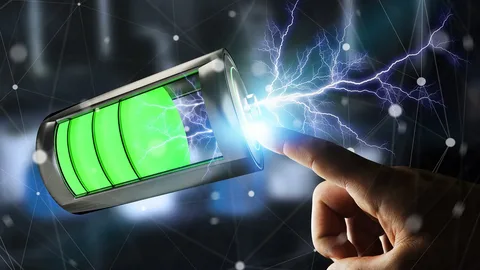You’re about to discover how graphene battery innovations are revolutionizing electric vehicle batteries. You want faster charging, longer range, safer and more durable tech—graphene may deliver. I’ll guide you step by step:

- Why traditional lithium‑ion falls short
- What graphene brings to the table
- Current breakthroughs and real‑world progress
- Challenges ahead and timeline to adoption
- Practical implications for you as an EV user or enthusiast
2. Why You Should Care: EV Pain‑Points Solved by Graphene Battery Tech
Your biggest worries about electric vehicles today include:
- Slow charging times
- Limited driving range
- Battery degradation over time
- Battery safety concerns (thermal runaway)
Graphene can help you overcome all of these.
3. What Is Graphene Battery—and Why It Matters for EV Battery Technology
Graphene is a single-atom‑thick sheet of carbon in a hexagonal lattice. It’s about 200× stronger than steel, ultra‑lightweight, and superbly conductive.(AZoCleantech, Crown Electric Mobility)
Key properties:
- Exceptional electrical conductivity
- Superior thermal conductivity
- Huge surface area
- Mechanical strength and flexibility
These translate directly into better electric vehicle batteries.
4. Top Benefits of Graphene Battery Enhanced for EVs
Graphene integration brings strong advantages:
- Faster Charging Speeds – charging in minutes not hours
- Higher Energy Density – more range per weight/volume
- Longer Lifespan – reduced degradation over cycles
- Enhanced Safety – better heat dissipation, lower fire risk
- Better Performance – support higher power output and acceleration(AZoCleantech, GreyB, Energy Monitor)
5. How Graphene Battery Is Used in Today’s EV Battery Tech
Researchers and startups are applying graphene in multiple ways:
- Graphene coatings on cathode particles improve energy/power density by 30–40%. (Volexion’s technology)(GreyB)
- Graphene‑silicon composites in anodes deliver up to ~750 mAh/g, stable after 1,000 cycles(arXiv)
- Graphene foils as current collectors provide thermal conductivity ~10× copper (~1400 W/m·K), suppress thermal runaway(Interesting Engineering, ScienceDaily)
- Thermal management systems augmented with graphene nanofluids or hybrid phase change materials to improve cooling and longevity(MDPI, arXiv)
6. Comparison Table: Graphene Battery Applications versus Conventional Batteries
| Graphene Application | Benefits for EVs | Compared to Standard Li‑ion |
|---|---|---|
| Graphene‑coated cathodes (e.g. Volexion) | +30–40% energy and power density | Standard cathodes |
| Graphene‑SiOC or graphene–Si composites | ~750 mAh/g reversible, ~95% retention after 1K cycles | ~372 mAh/g graphite anodes |
| Graphene current collectors (foils) | ~10× thermal conductivity, safer, flexible | Copper/aluminum collectors |
| Graphene nanofluid cooling / PCMs | Rapid heat dissipation, reduced thermal aging | Basic liquid cooling or metals |
This comparison gives you a clear picture: graphene-enabled parts extend range, reduce charging time, enhance safety and lifespan.
7. Real‑World Progress & Industry Players
Startups & companies making headway:
- Volexion (US): graphene‑coated cathodes boosting energy and power by ~30–40 percent(GreyB)
- Skeleton Technologies: using curved graphene in ultracapacitors for ultra-fast bursts; exploring integration into EV battery systems(TS2 Space, Wikipedia)
- Swansea University + partners: scalable graphene foil manufacturing (stable after bending 100,000×), ready for large‑scale LIB integration(Interesting Engineering, ScienceDaily)
Graphene in thermal management:
- Latest academic reviews show graphene nanofluid and hybrid phase change material systems outperform conventional cooling by large margins(MDPI, arXiv)
NOTE:
- AI‑based industry analysis predicts graphene will disrupt EV battery market by mid‑2030s(Energy Monitor)
- Pure graphene batteries remain experimental; graphene enhancements to Li‑ion cells are nearer term, likely appearing in premium models by late‑2020s.(GreyB, TS2 Space)
Some companies like StoreDot focus on silicon‑based ultra‑fast charging batteries (not pure graphene) but share the same fast‑charge aspiration: 100 miles in 5 minutes; graphene helps similar tech evolve(Wikipedia)
8. Key Challenges You Should Know About Graphene Battery
While exciting, graphene batteries face hurdles:
- High production costs and scalability concerns with high‑quality graphene materials(MDPI, ScienceDirect)
- Integration into existing battery manufacturing systems adds complexity
- Reliability and long‑term performance under real‑world conditions still under validation
- Potential supply chain limitations for graphene when demand spikes
Researchers work to reduce costs (CVD, exfoliation) and scale production; prices could drop ~50 % in next 5 years(MDPI, ScienceDirect).
9. What This Means for You (Practical Insights)
If you’re an EV buyer, fleet manager, or tech enthusiast:
- Expect EVs with graphene‑enhanced batteries offering faster charge and better range in the late 2020s.
- Premium EV brands may debut graphene‑boosted battery systems first—with noticeably shorter charging times (even minutes).
- For battery thermal management, graphene can reduce the risk of fire or degradation, improving safety.
- In time, second‑generation graphene batteries may appear in more affordable EVs as costs drop.
10. Steps You Can Take Today For graphene battery
You can prepare now:
- Watch for EV specs listing graphene-enhanced battery or graphene thermal management
- If you’re leasing or replacing batteries, ask vendors about graphene-coated cathode or graphene cooling technologies
- Consider EV charging patterns: faster charging may allow you to rely less on home charging infrastructure
- Stay alert to news from startups like Volexion, Skeleton Technologies, or battery partners of automakers
- Follow research like Swansea University’s graphene foil breakthrough and MDPI reviews on thermal management(MDPI, ScienceDaily)
11. Frequently Asked Questions
Q: Can I buy a pure graphene battery EV today?
A: Not yet. Full graphene‑based EV batteries remain experimental. Most progress is in graphene-enhanced lithium-ion cells, expected in high-end models in coming years.
Q: Will graphene make charging as fast as filling a gas tank?
A: Very close — some graphene-enhanced or silicon‑graphene technologies aim for 100 miles in about 5 minutes. Realistically, you’re looking at partial fast charges in minutes within the next few years.
Q: Is graphene safer than lithium‑ion?
A: Yes. Since graphene conducts heat exceptionally well, it reduces overheating and thermal runaway risk compared to copper‑based systems.
Q: What about battery lifespan?
A: Graphene coatings and composites significantly reduce degradation. Some graphene‑silicon anodes show 95% capacity retention after 1,000 deep cycles.
Q: When will widespread EVs with graphene arrive?
A: Widespread adoption likely in the mid‑2030s, but graphene-enhanced Li‑ion batteries could appear in nicer EVs by 2028–2030.
12. Conclusion
You’ve learned how graphene battery technologies promise real, tangible improvements:
- Fast charging battery performance
- High energy density battery range gains
- EV battery thermal management advancements
- Improved safety, lifespan, and power output
Graphene isn’t a miracle fix—but it’s a game-changing upgrade to lithium-ion systems, providing incremental yet powerful performance boosts. You’ll start seeing these in premium EVs within a few years, with broader access by the mid‑2030s.
As production scales and costs fall, graphene-enhanced battery tech will power next-gen electric vehicles with speed, safety, and efficiency. Stay informed—you’re witnessing the dawn of a transformative era in EV batteries.
FELLOW US ON FACEBOOK ON TRTOM…


